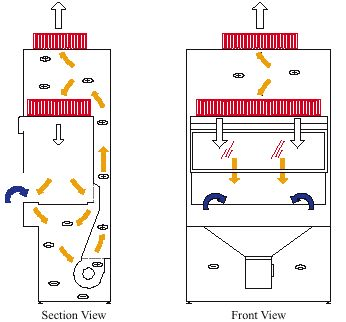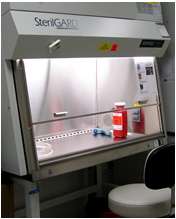

On an annual basis, an external company inspects and certifies all Biological Safety Cabinets (BSC) and Laminar Flow Clean Benches (LFCB). The proper class and type must be selected to match the need for the specific application and level of bio-containment required. The primary purpose of a biosafety cabinet is to protect the operator and the surrounding environment from biological contaminants and other hazardous materials. These cabinets are designed to provide various levels of protection. For this reason, when a sample, user and the environment need to be protected, a biosafety cabinet should be utilized.Ī Biosafety Cabinet is an enclosed, ventilated hood or workspace that allows for the safe handling of pathogens, contaminants or other potentially hazardous materials. The basic laminar flow clean bench does not protect the user from chemically hazardous or infectious materials, including particulate or volatile hazards. Laminar Flow Clean BenchesĪ laminar flow clean bench provides a space to work with a sample or product, where it will be protected from contamination by particulates such as microorganisms. However, these containments differ in the level of protection provided to the user, the environment and the sample. All laminar flow hoods use high-efficiency particulate air (HEPA) filters to sterilize and remove particulates from the air. Laminar flow hoods are divided into two categories: biological safety cabinets and laminar flow clean benches. This laminar flow is also vital for a mushroom flow hood used in mushroom growing to stream a steady flow of highly filtered, clean air in an uninterrupted flow.Laminar Flow Hoods are used to protect personnel, samples and the environment from exposure to biological hazards and cross contamination. The air flow within the flow hood helps ensure that any airborne particles are quickly captured and removed, creating a sterile working environment. This unidirectional airflow is called a hood flow, which gives the laminar air flow hood its name. The filtered air flows through the top of the cabinet, creating a clean and sterile environment. The air passes through the laminar hood through filters designed to capture and remove particles. The laminar flow cabinets have a blower that draws air in and pushes it out in a smooth and even flow. How does a laminar flow hood work?Ī laminar flow hood, also known as an air flow hood, works by creating a stream of unidirectional air to remove particles from the air. Also, horizontal laminar flow hoods are often larger than vertical ones, making them ideal for applications that require larger work surfaces. This allows for better airflow distribution and increased protection against cross-contamination. It also has an air filter at the top, but instead of filtering down into the cabinet, the air is filtered horizontally across the work surface. The horizontal laminar flow hood is often preferred when more stringent contamination control is needed. A vertical flow hood is often used in applications where speed is important since it is easily accessible from the front or top of the cabinet. Air flows through the filter and down into the cabinet in a uniform, laminar air flow pattern, removing dust and particulate contaminants from the workspace. It consists of a cabinet with an air filter located at the top. The vertical laminar flow hood is the most common type used in laboratories and other cleanrooms. What are the two types of laminar flow hoods?

Laminar flow hoods are used in many industries, including pharmaceuticals, research laboratories, and electronics manufacturing. It works by using a combination of air pressure and a filtering system to provide a steady, unidirectional flow of air over the work surface, trapping any airborne particles and keeping the area clean and sterile.

A laminar flow hood is a specialized laboratory equipment designed to create a contaminant-free work area.


 0 kommentar(er)
0 kommentar(er)
